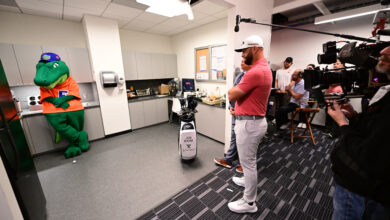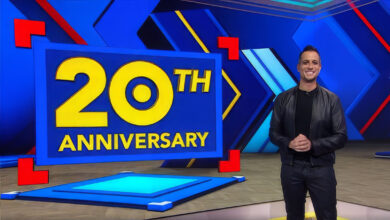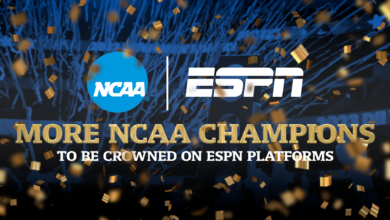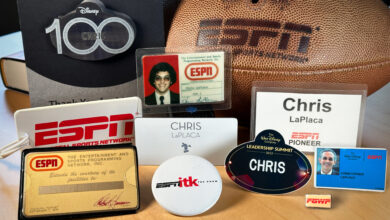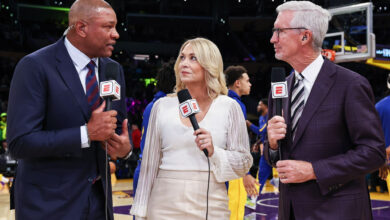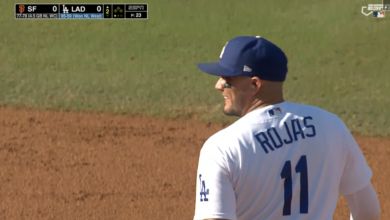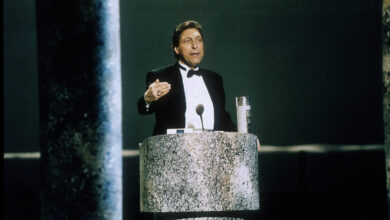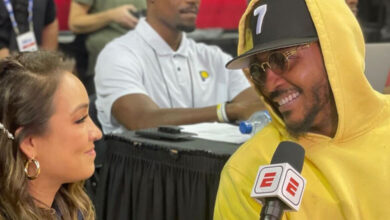9/1/80: ESPN Goes 24/7
People who spend too much time looking backwards when they should be focused on what’s ahead invariably trip over the ottoman.
I try not to be that guy — except for today.
Today I have been asked to write a post about the mood around here on Sept. 1, 1980 — the day ESPN, almost a year into its existence, finally began televising sports 24 hours a day, seven days a week.
People tend to memorialize the past, put a polished sheen on times that perhaps in reality were much less glorious. One could look dreamily at Sept. 1, 1980 as the dawn of a new era, when the promise of sports available to fans 24/7 took seed. Or, for those of us at ESPN who were here on that date, we could remember it as a day like many others back then – a day where we showed up early, across the street from a side-of-the-road scrap metal dealer, and went about the work of building a network, too busy to fully engage the gnawing notion that if this gamble didn’t work, perhaps we’d end up in a scrap heap of another kind.
The funny thing is, both points of view ring true.
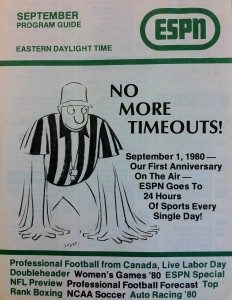
The sports world did change that day, and for fans it’s never been better. Sports when you want them, any time of day?
What fan wouldn’t want that? We were alone then in creating that vision. We are not now. ESPN has launched a plethora of 24/7 services through every available technology around the world in the 31 years that have passed since that day, and on each of those platforms, we have vibrant competition – a terrific thing for fans.
But this is also true: when I showed up for work that day, I entered a trailer that I shared with several other people. We didn’t have desks; we sat in front of folding tables parked along the back wall. I didn’t have a file cabinet; whatever paper I felt the need to keep I placed in a cardboard box. We shared phones; if one person had a cold on Monday, by Friday we also shared tissue boxes.
Computers? Nope. IBM Selectrics and White-Out.
Bathroom? Nope. When it was time to go, you ran through the rain to the Broadcast Center, the only true building we had at the time.
And being the first one in the trailer in December meant freezing for the first 15 minutes while the heating “system” – a small wall unit – lazily cranked to life.
One person did have a desk, and a tiny office with a door, on one end of the trailer – Rosa Gatti, whom ESPN President Chet Simmons hired from Brown University to lead ESPN’s Communications efforts. Rosa, much to my eternal delight, brought me with her from Brown a week later – a hire borne more from expediency than talent. I was a year out of college, and greener than a freshly sodded football field.
We were the pr department at the time, along with ESPN’s first intern, Mike Soltys, who is now VP of Communications.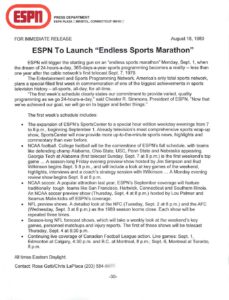
On Sept. 1, 1980, the ESPN pr department had a problem. Chet had charged us with generating tons of attention for going 24-7; CNN had beaten us to that achievement by a few months, but now it was our turn. The world must know! The problem was, the world barely knew of ESPN, period. We were only in roughly five million homes across the USA.
How many hours of taped college football, tractor pulls, Australian Rules Football and SportsCenter – there was always SportsCenter – we would now present seemed a little cart-before-the-horse to a young kid who knew nothing about the television business, having worked in it for all of six weeks.
Anyone who has read even a little about the history of ESPN knows what an iconic figure Chet Simmons was in sports TV and certainly to the beginnings of ESPN. He and Scotty Connal came to Bristol from NBC Sports and led a collection of adventurous industry veterans (there were a few of them) and a ragtag group of wide-eyed innocents (there were many of us). They could see where we were headed much more clearly than us, so when Chet said to get something done, we worked our tails off to accomplish it.
Someone on our team found this press release, heralding the Big Day. Note the strategic use of bullets (kidding). Also note Chet’s quote (he wasn’t kidding). We mailed that release; email was a thing of the future. And it was about as effective as I am when trying to reason with my three-year-old daughter, with whom I have yet to win an argument with anything other than, “Because I said so.”
So, on Sept. 1, 1980, Rosa and I called everyone we could think of to try to generate whatever attention we could. Finally, and with great relief, I recall that the Associated Press did a small item on their national wire. AP! “Crisis” over.
It is telling to note that I spoke with several of the folks who were here then that work here now – there are roughly 40 of us – and to a person, none of them had a vivid recollection of that day. Still, two small stories I’ll share: the 2 a.m. ET SportsCenter, which had been the last show aired before signing off, always went as long as they felt like going, since they were the only ones left in the building – the corporate version of the parents being away and you are home alone. Now, they were forced to stop at 3….And, while going 24-hours-a-day did present many technical challenges, it also solved one: previously, whenever the overnight show ended, someone would turn off the cable connecting us to the local cable system whose satellite antennas we used, figuring we were off the air. When we attempted to sign back on the next day at 6 p.m., invariably we’d find the power supply was off or a set of signals weren’t there. So it was always a challenge starting up again. That challenge would be no more.
I have to say I was a bit disappointed, but then encouraged, by my colleagues’ collective lack of vibrant anecdotes.
In the end, it’s good to know I still work with people who know exactly where the ottomans are.
